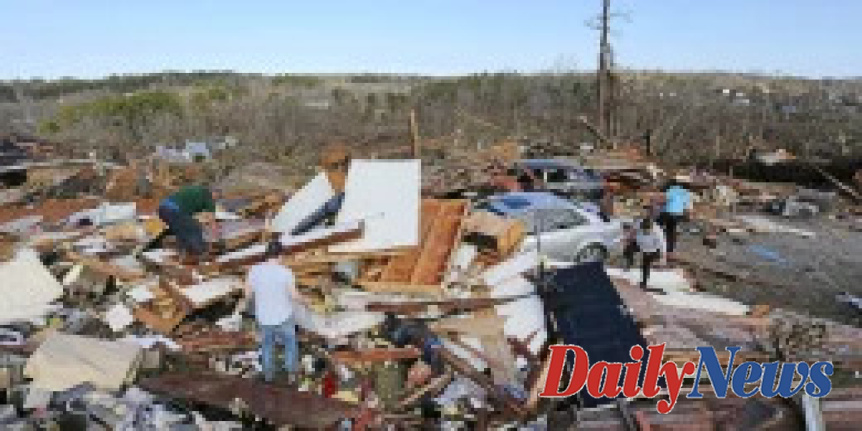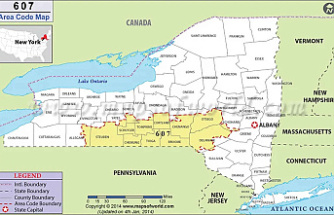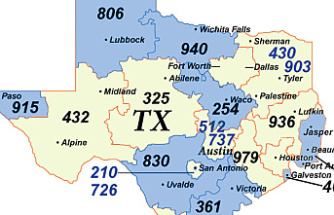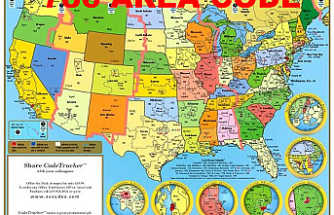FULTONDALE (Ala.) -- A tornado of winds up to 150 mph ripped through this small Alabama town last year. Elliott Arizaga Hernandez, 14, ran upstairs to grab his lantern. It was a birthday present and he didn't want the lights to go out. He ran back to the basement, joined his family and four brothers, and huddled together as the windows fell.
Christopher, Elliott's older brother, later said that they heard something sound like a train engine. "Get down!" Christopher screamed. The basement's brick wall collapsed. Saraid Hernandez, their mother, grabbed Elliott just moments before the ceiling collapsed.
Elliott called out "Mommy," as a beam fell and pinched Saraid's arm below it.
Christopher later learned that she knew she had been badly hurt. She was also more concerned about Elliott, her second-youngest child.
She said to him in Spanish, "Pray", "Don't worry. Just pray."
On Jan. 25, 2021, a tornado cut a 10-mile path through Jefferson County, Alabama. It destroyed 86 homes, severely damaged 45 others, and devastated Fultondale, north of Birmingham, with nearly 10,000 people. Strong winds were strong enough that they were able to flip storage containers and a mobile house.
Mayor Larry Holcomb stated that "our town was demolished." "It was completely destroyed."
Holcomb and other local emergency management officials became aware of the extent of the losses and pleaded for federal assistance -- even to the White House. According to the Federal Emergency Management Agency, it would cost $1.8 million to help those without insurance find temporary shelter and begin to rebuild their homes.
The federal government refused to help Jefferson County, claiming that the tornado didn't cause enough damage for FEMA to provide assistance. More than a year later, the debris has surrounded the houses that were destroyed. Holcomb, who had been denied by FEMA, put his hopes on the state but was disappointed to discover that Alabama does not have any publicly funded assistance for those who can't afford to rebuild.
He said, "They don’t offer anything."
FEMA's Individual Assistance Program is a program that spends hundreds of millions each year to help uninsured residents recover from severe storms. Families eligible for assistance can receive up to 75,800 for costs such as home repairs, hospital bills, funeral costs, and temporary hotel stays if the White House approves their request. This is usually based on FEMA's recommendation. These funds can make the difference between rebuilding your home or becoming homeless.
An NBC News analysis revealed that this crucial aid is not available to many disaster survivors in the country, including those most financially vulnerable.
According to agency records, nearly 40% of requests from states for FEMA's Individual Assistance Program were denied between fall 2018 and fall 2021. These rejections were due to disasters such as wildfires or flash floods, tornadoes, and mudslides. FEMA estimated that fulfilling these denied requests would have cost $107.5million -- less than half the amount approved for New Jersey residents following Hurricane Ida.
These were often disasters that caused concentrated damage, with many homes being destroyed in just a few counties rather than widespread destruction throughout a state. FEMA prioritizes assistance for major disasters and those in densely populated regions. The agency frequently considers other disasters too small for federal assistance and says that the state and local governments should be able help.
NBC News' analysis revealed that FEMA rejected many communities because of economic hardships that left disaster survivors without other options. Nearly all the communities that were denied federal assistance had poverty rates that were higher than the national average. In two-thirds, however, insurance was not available to the majority of affected residents.
Alabama was one of the poorest states in the three-year period. It was rejected for aid after it requested assistance for a 2018 hurricane, winter storms 2019 and the 2021 tornado that claimed the life of the Arizaga family.
According to the 2020 survey of the National Emergency Management Association, Alabama is one of 39 states without a public-funded state aid program to assist disaster survivors in rebuilding their homes. These states' struggling residents are often forced to rely on charity or loans without any federal or state assistance. This is a poor safety net according to emergency managers, elected officials and community advocates as well as disaster recovery specialists.
FEMA might not be able help every community that asks for aid. States bear some responsibility for mitigating disasters' impact. However, the federal government should still help those in greatest need. Carlos Martin, a Brookings Institution researcher who studies the financial consequences of disasters, stated that FEMA is not able to help all communities.
He said, "There's a role for federal government to step in and help [when] state hasn’t."
Martin believes FEMA should have an independent approval process for aid to communities with low resources to ensure priority.
Senator Dick Durbin (D-Ill.) has been trying to change this process since 2012, when FEMA refused aid to Illinois following a Harrisburg tornado that destroyed more than 200 homes and killed eight people. He said that he had to stop promising his constituents that he would send disaster relief from Washington.
He said that he had stopped saying these things "because I didn't want false hope" in a recent interview. "It is so rare that there is assistance coming back to Washington."
FEMA takes into account a variety of factors when deciding which disasters are worthy of assistance under its Individual Assistance Program. This includes the state's economy as well as the percentage of uninsured homes or damaged homes. FEMA also offers a separate Public Assistance Program that helps local governments rebuild their infrastructure following disasters. It has a transparent threshold that determines which communities will receive assistance based on the per capita damage.
Durbin has advocated for legislation to require FEMA's Individual Assistance Program place a greater emphasis on local economic conditions, including the consideration of the median income in the community. His bill was not approved.
FEMA responded to NBC News' analysis by releasing a statement saying it was working to make its Individual Assistance Program fairer and to meet people "where they are to identify barriers and remove them from our programs."
"We are also making every effort to help socially vulnerable communities as well as survivors," the statement said. "Efforts that require regulatory or statutory changes are also being considered." We're looking at it from all angles, and will do everything we can to support survivors and vulnerable communities through our individual assistance program.
FEMA refused to give details on any policy changes.
Alabama Governor. Kay Ivey (a Republican) requested that the Biden administration issue a major disaster declaration to allow Fultondale residents to apply to FEMA's Individual Assistance Program. She requested that the state declare a major disaster because the state was still recovering after a hurricane and a severe storm in the fall. Fultondale could not receive the assistance it needed.
Ivey stated that Alabama does not have a state program to support family and individual recovery. "Individual recovery and family recovery will outstrip the ability of the State and local jurisdictions to support them."
FEMA received at least 36 requests for assistance following natural disasters last year. Melissa Forbes, FEMA's acting assistant administrator, stated in a recent interview, that individual assistance is approved by FEMA based on a variety of factors, including the state’s taxable resources, damage, and the residents' insurance coverage.
However, does not have a definitive formula. This makes it difficult for local leaders and officials to predict whether aid will be approved by the federal government. FEMA doesn't consider whether a state has paid for its own disaster relief program in order to support residents. It only considers whether the state can afford to help.
Forbes admitted that certain disasters are "sort of on the line" when it comes to whether aid is required.
She said, "We do our best in each situation based upon the information that states provide us."
The federal government refused to grant aid to Alabama on March 17. Forbes stated that the state was able to respond to the damage.
However, the state was not able to offer any assistance. Ivey's office sent questions to the Alabama Emergency Management Agency. Greg Robinson, a spokesperson for the agency, stated that while the agency officials stressed the importance of a program to provide direct public assistance to those who are struggling to recover after disasters, no money has been allocated.
Fultondale residents were left with only loans and charity. United Way granted $139,927 in assistance -- less than 10% of the FEMA estimate.
Oscar Jr. stated recently that he didn't understand why Fultondale wasn't declared a disaster area. It was very messy."
A small town stepped in to help, providing meals and setting up GoFundMe accounts which raised thousands of dollars. Oscar Sr., however, was unable to work due to mounting medical costs.
After sharing a room in a friend's house for weeks, the Arizaga family reached to Holcomb to find a new place to call home. Holcomb offered to let them live in his rental property for free.
'A major cause of frustration'
Jim Coker, the director of Jefferson County Emergency Management Agency, stated that FEMA rejected Alabama's request to receive aid for the Fultondale tornado.
He said, "That's an above-us decision."
This process has been criticized by emergency managers all over the country, as well as some members of Congress.
Bart Chambers, director of emergency management in Buchanan County Virginia, discovered that Hurley, a small Appalachian community, had lost its appeal for FEMA assistance and would no longer receive any individual assistance following flooding that destroyed 31 homes.
He said, "There were criteria that we had to meet, but I don’t know how we could have failed to meet the criteria." "I get annoyed because there is no fixed number."
Residents of Chalk Level, an historically Black neighborhood in the suburbs, of Atlanta, still depend on volunteers to help them rebuild nearly one year after a tornado destroyed more than 130 homes. Nearly a quarter of the homes were left uninsured after FEMA denied assistance.
Michael Terrell, Coweta County's director of emergency management, stated that "They didn’t ever tell us: You failed because of this." "That wasn't ever relayed to us. "We just received the very generic letter."
FEMA stated in a statement that it works with local nonprofit organizations to help disaster recovery even when individual assistance is denied. According to the statement, FEMA has expanded outreach to low-income communities and made sure that more disaster victims are eligible for aid after individual assistance is approved.
The Government Accountability Office reported in 2018 that FEMA's decisions were "subjective", making it difficult for states and territories to decide when to seek aid. The GAO official responsible for that report stated last October that there is still confusion about which communities will receive aid during the U.S. House Homeland Security Committee hearing.
"What could occur in rural Mississippi could completely differ from what happens elsewhere in the country, and this was a major source for frustration by local officials over years," Chris Currie (director for homeland security, justice issues, GAO) said during the hearing.
He said, "They might even have a neighboring state declared for the same catastrophe and they weren’t." "And they don’t know why and were not given any explanation."
Rep. John Katko (R-N.Y.) stated that the agency's formulas favor large-scale disasters while neglecting the needs and concerns of low-income communities following smaller-scale events. For example, floodingin 2017, which caused millions in damages to a small town in the Finger Lakes area of his state.
During the hearing, he stated that he was sick of people living in multimillion-dollar mansions and receiving FEMA assistance while rural people don't get squat. We have to change this."
Second storm
One week after Alabama denied FEMA assistance in Fultondale, another storm struck the state on March 25, 2021. Six people were killed and more than 200 homes were destroyed by a series of tornadoes. With winds up to 150 mph, the longest tornado stayed on ground for 80 miles. Fultondale was spared but other areas of Jefferson County were affected, including Birmingham where 42 homes were destroyed.
Ivey requested assistance from FEMA again, this time for eight additional counties, including Jefferson County. Biden quickly issued a disaster declaration to help residents apply for FEMA individual assistance, despite the extent of the damage.
Methodology
NBC News analyzed FEMA's Preliminary Damage Assessments between 2018 and 2021 to see how often FEMA or the White House refused to approve direct assistance for victims of natural disasters. These were then compared to a FEMA database that shows whether disasters resulted in awards under its Individual Assistance Program. We considered as "declined” only requests made by governors that did not result in any award of individual assistance to any particular county. Sometimes, governors asked for aid for more counties that they received, but these were not included in our analysis.












